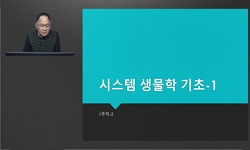본 논문은 국어 심리형용사 구문의 기본 문형을 설정하는 것을 목표로 하였다. 본 연구에서는 첫째, 심리형용사가 두 개의 필수 논항을 요구한다고 제안한 기존 논의(유현경 1998 등)가 심리...
http://chineseinput.net/에서 pinyin(병음)방식으로 중국어를 변환할 수 있습니다.
변환된 중국어를 복사하여 사용하시면 됩니다.
- 中文 을 입력하시려면 zhongwen을 입력하시고 space를누르시면됩니다.
- 北京 을 입력하시려면 beijing을 입력하시고 space를 누르시면 됩니다.
부가정보
국문 초록 (Abstract)
본 논문은 국어 심리형용사 구문의 기본 문형을 설정하는 것을 목표로 하였다. 본 연구에서는 첫째, 심리형용사가 두 개의 필수 논항을 요구한다고 제안한 기존 논의(유현경 1998 등)가 심리형용사의 속성을 온전히 반영하고 있지 못하다는 점을 지적하였다. 둘째, (i)논항 구조에서의 경험주와 화자의 관계 그리고 (ii) 심리형용사의 표현 양상(“내재된 감정 표현” 또는 “인도된 감정 표현”)이 심리형용사 문장 형성에 중요한 역할을 하고 있음을 밝혀내었다. 이 같은 사실을 통해 본고는 대상 심리형용사로 분류된 형용사들(예: 무섭다, 싫다 등)은 대상 논항을 필수적으로 요구하는 형태가 기본 문형임에 반해 원인 심리형용사로 분류된 형용사들(예: 슬프다, 기쁘다 등)은 내재된 감정을 표현할 때와 인도된 감정을 표현할 때가 구분되기 때문에 서로 다른 두 개의 기본 문형을 설정하여야 한다고 주장하였다.
다국어 초록 (Multilingual Abstract)
This study discussed how to determine so-called “basic structure” of psychological adjectives in Korean. Firstly, this study criticized the proposals that the argument structure of psychological adjectives in Korean consisted of two arguments in t...
This study discussed how to determine so-called “basic structure” of psychological adjectives in Korean. Firstly, this study criticized the proposals that the argument structure of psychological adjectives in Korean consisted of two arguments in the previous studies (유현경 2000 등). Secondly, this study proposed several basic structures of psychological adjectives based on the following examinations: (i)considering the original concept of argument structure, (ii)clarifying the relationship between Experiencer argument in the argument structure and the speaker in the discourse, (iii) dividing “inherent feeling” and “direct feeling” that were expressed by psychological adjectives. In this study, some relevant properties related to psychological adjectives in Korean were found. So, psychological adjectives including the so-called “thematic psychological adjectives” (e.g., 무섭다, 싫다 등) should take a Theme argument as the core argument while psychological adjective including the so-called “causal psychological adjectives” can be classified as two different types: when they express an inherent feeling and when they express a direct feeling. Therefore, this study proposed three different types of the basic structure of psychological adjectives in Korean.
목차 (Table of Contents)
- 초록
- 1. 서론
- 2. 기존 논의 검토
- 3. 심리형용사 구문의 특징
- 4. 심리형용사의 기본 문형
- 초록
- 1. 서론
- 2. 기존 논의 검토
- 3. 심리형용사 구문의 특징
- 4. 심리형용사의 기본 문형
- 5. 맺음말
- 참고문헌
- Abstract
참고문헌 (Reference)
1 김건희, "한국어 형용사와 비대격" 인문학연구원 (60) : 207-235, 2008
2 전지은, "한국어 형용사 유형 분류와 격틀집합: 세종전자사전을 활용하여" 한국어의미학회 25 : 223-251, 2008
3 남승호, "한국어 술어의 사건 구조와 논항구조" 서울대학교출판부 2007
4 박정규, "학교 문법에서의 기본 문형 정립을 위하여" 한국언어문학회 (83) : 5-36, 2012
5 이익섭, "피동성 형용사문의 통사구조" 국어학회 6 : 65-84, 1978
6 남기심, "표준국어문법론" 탑출판사 1985
7 남기심, "이용주박사회갑기념논문빕" 한샘 1989
8 고영근, "우리말 문법론" 집문당 2008
9 이익섭, "언어학 개설" 학연사 1986
10 조경순, "논항 구조를 활용한 한국어 기본 문형 구조 연구" 한국언어문학회 (61) : 83-108, 2007
1 김건희, "한국어 형용사와 비대격" 인문학연구원 (60) : 207-235, 2008
2 전지은, "한국어 형용사 유형 분류와 격틀집합: 세종전자사전을 활용하여" 한국어의미학회 25 : 223-251, 2008
3 남승호, "한국어 술어의 사건 구조와 논항구조" 서울대학교출판부 2007
4 박정규, "학교 문법에서의 기본 문형 정립을 위하여" 한국언어문학회 (83) : 5-36, 2012
5 이익섭, "피동성 형용사문의 통사구조" 국어학회 6 : 65-84, 1978
6 남기심, "표준국어문법론" 탑출판사 1985
7 남기심, "이용주박사회갑기념논문빕" 한샘 1989
8 고영근, "우리말 문법론" 집문당 2008
9 이익섭, "언어학 개설" 학연사 1986
10 조경순, "논항 구조를 활용한 한국어 기본 문형 구조 연구" 한국언어문학회 (61) : 83-108, 2007
11 오충연, "국어의 서술체계와 논항구조" 숭실어문학회 16 : 31-61, 2000
12 김정남, "국어 형용사의 의미구조" 한국어의미학회 8 : 171-199, 2001
13 유현경, "국어 형용사의 유형에 대한 연구" 국어학회 36 : 221-258, 2000
14 유현경, "국어 형용사 연구" 한국문화사 1998
15 김세중, "국어 심리형용사문의 몇 가지 문제" 서울대학교 언어교육원 25 (25): 151-165, 1989
16 Pustejovsky, J, "The Generative Lexicon" The MIT Press 1995
17 Li, C & Thomson, S, "Subject and Topic: A New Typology of Language" Academy Press 1976
18 Jakendoff, R, "Language, Consiousness, and Culture: Essay on Mental Structure" The MIT Press 2007
19 Kim, M-J, "Does Korean has adjectives?" 2000
20 이정민, "Cases for Psychological Verbs in Korean" 한국언어학회 1 (1): 256-296, 1976
동일학술지(권/호) 다른 논문
-
- 동남어문학회
- 이근열
- 2014
- KCI등재
-
- 동남어문학회
- 최중호
- 2014
- KCI등재
-
- 동남어문학회
- 김양희
- 2014
- KCI등재
-
- 동남어문학회
- 박대현
- 2014
- KCI등재
분석정보
인용정보 인용지수 설명보기
학술지 이력
| 연월일 | 이력구분 | 이력상세 | 등재구분 |
|---|---|---|---|
| 2026 | 평가예정 | 재인증평가 신청대상 (재인증) | |
| 2020-01-01 | 평가 | 등재학술지 유지 (재인증) |  |
| 2017-01-01 | 평가 | 등재학술지 선정 (계속평가) |  |
| 2016-12-01 | 평가 | 등재후보로 하락 (계속평가) |  |
| 2012-01-01 | 평가 | 등재학술지 선정 (등재후보2차) |  |
| 2011-01-01 | 평가 | 등재후보 1차 PASS (등재후보1차) |  |
| 2009-01-01 | 평가 | 등재후보학술지 선정 (신규평가) |  |
| 2007-07-06 | 학회명변경 | 영문명 : Dong Nam Eo-Mun-Hak-Hoi -> Dongnam Journal of Korean Language & Literature | |
| 2007-06-28 | 학회명변경 | 영문명 : Dong Nam Eo-Mun-Hak-Hoi -> The Society of the Dongnam Language & Literature |
학술지 인용정보
| 기준연도 | WOS-KCI 통합IF(2년) | KCIF(2년) | KCIF(3년) |
|---|---|---|---|
| 2016 | 0.51 | 0.51 | 0.4 |
| KCIF(4년) | KCIF(5년) | 중심성지수(3년) | 즉시성지수 |
| 0.34 | 0.32 | 0.774 | 0.09 |





 스콜라
스콜라






